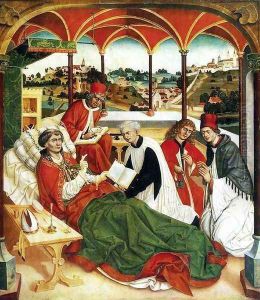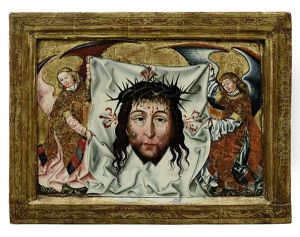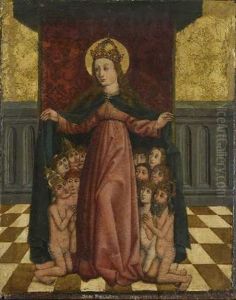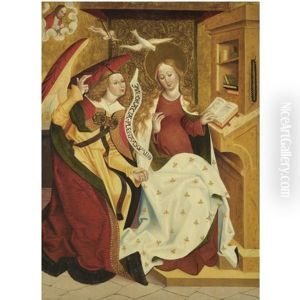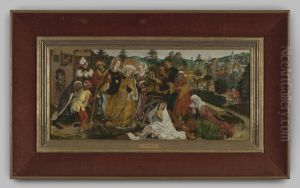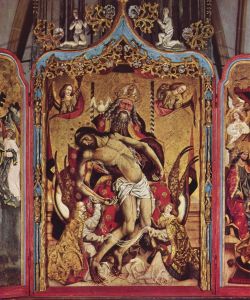Jan Polack Paintings
Jan Polack, whose real name was Johannes Polackus, was a notable late Gothic artist, born around 1450, possibly in Kraków, Poland. His exact birthplace, however, remains a subject of speculation among art historians. Polack moved to Southern Germany, where he became an integral part of the Munich art scene, contributing significantly to its development during the late 15th and early 16th centuries. His work is characterized by its meticulous detail, vibrant colors, and the incorporation of religious themes, typical of the Gothic tradition transitioning into the Renaissance.
Polack received his artistic training likely in Kraków or in Southern Germany. By 1475, he was active in Munich, a city that became his primary base of operations. He became a citizen of Munich in 1482, which marked the beginning of his most productive period. Polack's paintings are distinguished by their elaborate detail and the use of gold leaf, which added a divine luminosity to his religious subjects. His altarpieces, in particular, were highly sought after and can be seen as a testament to his skill in combining spiritual themes with the emerging technical innovations of the Renaissance.
Among his notable works are the altarpiece for the St. Michael's Church in Munich and the portrait of Duke Sigismund of Bavaria, highlighting his status as a painter to the Bavarian ducal court. Polack's influence extended beyond his paintings; he played a significant role in the development of Munich's art community, mentoring younger artists and contributing to the city's cultural legacy.
Jan Polack's death in 1519 marked the end of an era in Munich's art history. While he may not be as widely recognized as some of his Renaissance contemporaries, his contributions to the transition from Gothic to Renaissance art in Southern Germany remain invaluable. Polack's work continues to be studied and admired for its historical significance and artistic beauty, offering insights into the cultural and spiritual life of late medieval and early Renaissance Germany.


